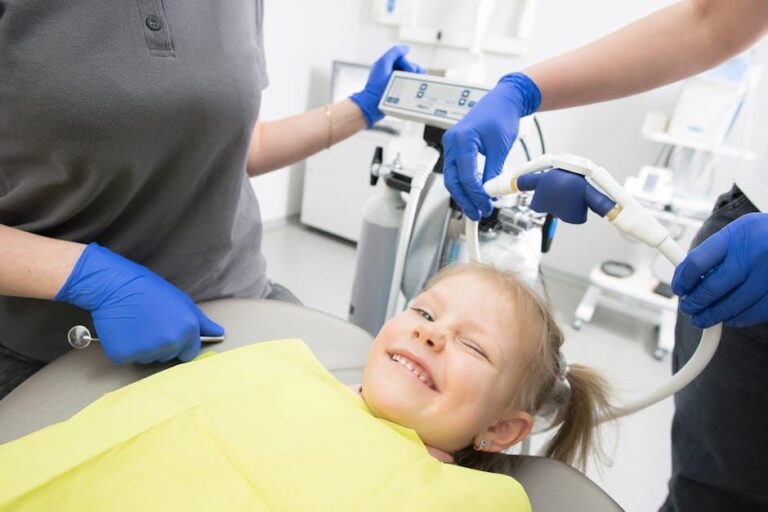1 in 3 Kids Has Dental Problems, Poll Finds – U.S. News & World Report
Dental health is a crucial part of a child’s overall wellbeing, yet a recent poll highlighted by U.S. News & World Report reveals a concerning statistic: 1 in 3 children in the United States suffer from dental problems. This staggering figure underscores the growing dental health challenges among young Americans and the urgent need for increased awareness, prevention, and early intervention.
In this comprehensive article, we will explore the poll’s findings, discuss common dental issues in kids, highlight the importance of pediatric oral care, and share practical tips for parents to ensure their children maintain a healthy smile.
Poll Findings: Understanding the Scope of Dental Problems in Children
The poll conducted nationally surveyed thousands of parents and pediatric dentists, uncovering key facts about children’s oral health:
- 33% of children reported experiencing dental issues such as cavities, gum inflammation, or tooth pain.
- Dental cavities remain the most common childhood disease in the United States.
- Many families face barriers to dental care access including cost, lack of insurance, and awareness.
- Children from low-income families are disproportionately affected by dental problems.
| Age Group | % with Dental Problems | Most Common Issue |
|---|---|---|
| 2-5 years | 29% | Early Childhood Caries |
| 6-12 years | 35% | Tooth Decay / Cavities |
| 13-18 years | 33% | Gum Disease / Orthodontic Issues |
Common Dental Problems in Children
Understanding the typical dental issues affecting children can empower parents and caregivers to take timely action. Here are the most prevalent problems:
1. Tooth Decay and Cavities
Also known as dental caries, cavities form when the enamel is damaged due to acids produced by bacteria feeding on sugars in the mouth.
2. Early Childhood Caries
This aggressive form of decay often affects toddlers and preschoolers, usually caused by prolonged exposure to sugary liquids.
3. Gum Disease (Gingivitis)
Inflammation of the gums can occur if plaque builds up, leading to redness, swelling, and sometimes bleeding.
4. Dental Trauma
Accidents and falls are common causes of chipped, cracked, or knocked-out teeth among active children.
5. Orthodontic Issues
Some older children develop bite and alignment problems that may require braces or other dental interventions.
The Importance of Pediatric Dental Care
Good oral health in childhood lays the foundation for a lifetime of healthy teeth and gums. Untreated dental problems can lead to pain, difficulty eating, speech issues, and lower self-esteem. Moreover, poor dental health has been linked to broader health concerns such as heart disease and diabetes.
Early visits to a pediatric dentist can help identify problems before they escalate. The American Academy of Pediatric Dentistry recommends the first dental visit by a child’s first birthday or when the first tooth appears.
Benefits of Early Detection and Prevention
- Reduced risk of cavities and gum disease.
- Cost savings by avoiding complex dental treatments later.
- Healthier habits established from a young age.
- Improved self-confidence and social wellbeing.
- Better overall health through good oral hygiene.
Practical Tips for Parents to Prevent Dental Problems
Parents and caregivers play a vital role in safeguarding children’s dental health. Below are actionable steps that can make a significant difference:
- Brush Twice Daily: Use a child-sized toothbrush and fluoride toothpaste to brush teeth gently twice a day.
- Floss Regularly: Help children floss to remove plaque and food particles between teeth.
- Limit Sugary Foods and Drinks: Reduce snacks and beverages high in sugar like candies, sodas, and juices.
- Schedule Regular Dental Checkups: Visit the pediatric dentist at least twice a year for cleanings and exams.
- Encourage Healthy Diets: Promote eating fruits, vegetables, and dairy products for stronger teeth.
- Avoid Bottle or Pacifier Overuse: Discourage bedtime bottles and prolonged pacifier use which can lead to dental decay.
- Use Protective Gear: For active kids, wear mouthguards while playing sports to prevent dental injuries.
Real-Life Case Study: Emily’s Journey to Better Dental Health
Emily, a seven-year-old from Ohio, struggled with cavities and painful toothaches due to inconsistent brushing and sugary snacks. After her parents implemented a strict oral hygiene routine and regular dentist visits, Emily’s smile transformed dramatically within six months.
- Initial dental exam found 4 cavities and mild gum inflammation.
- Parents introduced twice-daily supervised brushing and limited sweets.
- Regular dental cleanings every 6 months improved gum health.
- Emily’s confidence improved, and she became excited about caring for her teeth.
This case highlights the power of prevention, education, and parental involvement in managing children’s dental problems effectively.
Frequently Asked Questions (FAQs)
At what age should my child first see a dentist?
The American Academy of Pediatric Dentistry recommends a first visit by age one or within six months after the first tooth appears.
How often should kids brush and floss?
Children should brush twice daily and begin flossing once they have two teeth that touch, usually around age 2-3 years.
Are dental sealants necessary?
Dental sealants are a protective coating applied on molars to prevent cavities and are highly recommended for children prone to decay.
What if my child is afraid of the dentist?
Choosing a pediatric dentist trained in child-friendly approaches and preparing your child with positive talk can ease dental anxiety.
Conclusion: Prioritizing Kids’ Dental Health for a Brighter Future
The revelation that 1 in 3 children faces dental problems in the U.S. is a wake-up call for parents, healthcare providers, and policymakers alike. By embracing preventive care, establishing healthy oral habits early, and ensuring timely dental visits, we can change this statistic for the better.
Every child deserves a healthy, pain-free smile. Together, with informed awareness and proactive care, we can promote lasting dental health and empower our kids to smile with confidence every day.


